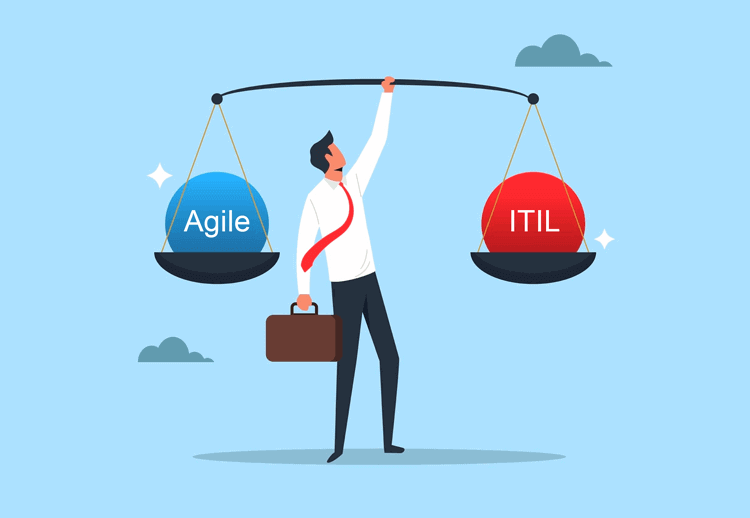
In the dynamic world of IT and project management, ITIL vs Agile are two frameworks that are often compared. While both aim to improve service delivery and project outcomes, they have distinct approaches and applications. This article delves into the core differences between ITIL and Agile, helping you understand their unique characteristics and benefits.
What is ITIL?
Definition and Origin
The Information Technology Infrastructure Library (ITIL) is a set of practices for IT service management (ITSM) that focuses on aligning IT services with the needs of the business. Originating in the late 1980s, ITIL provides a structured approach to managing IT services, emphasizing processes, roles, and responsibilities.
Core Components
- Service Strategy: Helps organizations determine the types of services they should offer and the capabilities needed to deliver them.
- Service Design: Focuses on designing new IT services and modifying existing ones to meet business objectives.
- Service Transition: Ensures that new or changed services are transitioned into the live environment smoothly.
- Service Operation: Manages the day-to-day operations of IT services to ensure they meet agreed service levels.
- Continual Service Improvement: Uses feedback and performance data to improve services continually.
Benefits
- Standardization: Provides a consistent approach to service management.
- Efficiency: Improves service delivery through defined processes and roles.
- Risk Management: Enhances the ability to manage risks and ensure service continuity.
What is Agile?
Definition and Origin
Agile is a project management and product development methodology that promotes iterative progress, ITIL vs Agile collaboration, and flexibility. Introduced in the early 2000s, Agile emerged as a response to the limitations of traditional project management approaches, offering a more adaptable and team-centric way to develop products.
Core Principles
- Individuals and Interactions: Emphasizes the importance of communication and teamwork over processes and tools.
- Working Software: Prioritizes delivering functional products over comprehensive documentation.
- Customer Collaboration: Focuses on engaging customers throughout the development process to ensure the final product meets their needs.
- Responding to Change: Encourages adaptability and responsiveness to changes, even late in the project.
Benefits
- Flexibility: Allows for adjustments based on feedback and changing requirements.
- Speed: Accelerates product development through iterative cycles.
- Collaboration: Enhances team cohesion and stakeholder engagement.
Key Differences Between ITIL and Agile
Approach and Focus
- ITIL: Emphasizes process-driven, structured service management.
- Agile: Focuses on iterative, flexible, and people-centric project development.
Implementation
- ITIL: Often implemented organization-wide to standardize IT service management practices.
- Agile: Typically used at the project or team level to improve development processes and outcomes.
Adaptability
- ITIL: Provides a comprehensive framework that can be customized but is inherently structured.
- Agile: Designed to be highly adaptable, allowing teams to respond quickly to changing requirements and feedback.
Collaboration and Communication
- ITIL: Encourages defined roles and responsibilities, with a clear hierarchy and communication channels.
- Agile: Promotes open communication and collaboration across all team members and stakeholders.
When to Use ITIL vs Agile
Choosing ITIL
- Complex IT Environments: Ideal for large organizations with complex IT infrastructures requiring standardized processes.
- Regulatory Compliance: Suitable for industries with strict regulatory requirements and the need for detailed documentation.
- Service Continuity: Best for organizations prioritizing service continuity and risk management.
Choosing Agile
- Rapid Development: Perfect for projects requiring quick development cycles and frequent releases.
- Innovation: Suitable for innovative projects where requirements may evolve over time.
- Customer-Centric Projects: Ideal for projects that benefit from continuous customer feedback and collaboration.
Conclusion
Both ITIL and Agile offer valuable frameworks for improving IT service delivery and project management. Understanding their core principles, benefits, and differences can help organizations choose the right approach for their specific needs. Whether you prioritize structured service management or flexible, iterative development, there is a framework to support your goals.
